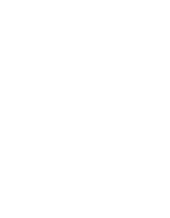 |
 |
 |

|
€25 excl. sending, incl. sending €36 within Europe
Language: Slovak, English
Year: 2017
Hardcover
Pages: 122
Colour photos: 122
Size: 284 x 240 mm
EAN: 978-80-89784-07-03
Published by: Galeria Nedbalka
Distribution: Galeria Nedbalka
Nedbalova 459/17, 811 01 Bratislava, Slovakia
+421 2/544 102 87
nedbalka@nedbalka.sk
www.nedbalka.sk
|
|
 |
PALO MACHO: TIMING THE LINE / CASOVANIE CIARY
The monograph Casovanie Ciary /Timing the Line examines the question of drawing in the work of the leading Slovak artists –glassmaker, painter, teacher and writer Palo Macho (1965)
Palo Macho is one of the most distinctive figures of Slovak contemporary art. He has gained an international reputation for his experimental work in glass and excellent painting.
The book focuses on Macho’s experiments in drawing as integrated into glass in the context of the last twenty years. Drawing as the most important component of the glass art works has been virtually unknown to international art glass world, if we do not identify drawing with etching that applies to different principles. The line drawing featured in the glass objects of artists has the appearance of a side effect of decoration or the result of hot-worked glass threads. Macho’s method of drawing is different. His comprehensive research into the possibilities of integrating drawing with glass, means drawing in connection with space, light and time. This makes his drawing different from other famous glass artists – draughtsmen, such as Stanislav Libenský, Stepán Pala or Dale Chihuly who are concerned with two-dimensional drawing on paper as a separate discipline.
Macho’s ambition is, simply put, drawing “on glass, in glass and with glass”. This is done in a unique way, and also by using new methods of technology. The book presents an analysis of Macho’s line drawings on the surface of glass sheets, drawings fused between glass sheets, drawings that float inside by means of prisms created by a sandwiched glass, printing from glass sheets (monotypes – vitrographics), and three-dimensional drawing created by glass relief (drawing with glass). Macho’s experiments in drawing and glass are a major contribution to the development of modern European drawing and international art glass, bringing unique discoveries and creating art treasures.
The monograph Casovanie Ciary /Timing the Line is a result of teamwork by the leading figures from the Slovak and Czech art scene. Apart from the concept conceived by Palo Macho, the author of this book is internationally recognised Sylva Petrová, emeritus professor at the University of Sunderland in Great Britain. Photographs Jana Hojstricová,
an art photographer who is Vice-Chancellor of the Academy of Fine Arts in Bratislava. Graphic design was produced by the photographer, illustrator and graphic artist Julo Nagy.
See the Agenda exposition Palo Macho, Casovaná ciara / Timing the Line>
and
See the Agenda> Exposition 2/6/2017-3/9/2017 Palo Macho: How are you, Wind?, Danubia Meulensteen Art Museum, Bratislava
|

|
Posted 16 July 2017
|
Share this:
|
|
Like all of the books and catalogues on Palo Macho, his works and expositions, this new book Palo Macho – Casovanie Ciary /Timing the Line – Timing the Line is a feast to see and read.
As aesthetic as his work is, this publication is divided into chapters as Drawing, Scribbling, Line, Space, Monotype and Conclusion with items like process, automatism and the subconscious, the glass surface, illusion, relief, videography and the blown glass pointing out the handwriting of a glass painter/sculptor who manipulates the light on, through and around glass.
In her conclusion Sylva Petrová writes on the examination by Macho who endows the drawing with the third dimension. And, on the 4th dimension, I would like to add as the kinetic qualities of the transparent bodies meet the solid ones and other materials like metal and stained lines that provoke all optical and diaphanous qualities from totally clear, transparent and translucent to semi-opaque and opaque or blind to mangle and form a changing sculpture in terms of space and time. Together with the layering, the parallax and the projection of light, colour and shadow, the reflection and mirroring of the sculptures control how we see with every step the spectator takes.
Again, Petrová proves in her very interesting texts her vast knowledge on glass, art and the Czech and Slovak art through to her conclusion that “Naturally, his merits are not diminished in art glass because he brings entirely new forms and unique results into the modern glass movement”: I only can approve.
With great photos and graphics, this well made book is one adventure to go through. Deserving of international attention, as Palo Macho’s work is like the maker himself so humble that it could be easily overlooked. His works are my hope for the future for glass painting and drawing.
I hope this ultimately sympathetic book finds its way into education departments, museums, and libraries as I, myself, had such intensely enjoyable hours reading it, or bringing it home after visiting the expositions.
Angela van der Burgh
|
|
|
|
|


